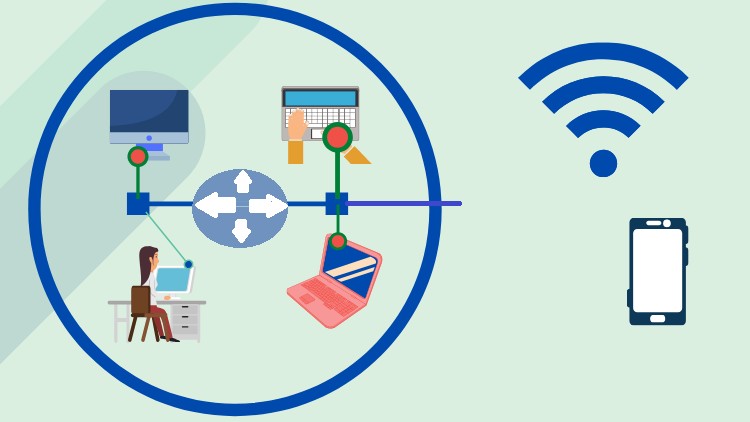
What you will learn
Detailed discussion on IPv4 Variable Length Subnetmask (VLSM) with example networks.
This course will students to do Certification like CCNA, CCNP etc.
IPv4 Classification : Class A, B, C, D and E (Theoretical and Practical Discussion)
Detailed discussion on Subnetting concept.
This course will prepare students to answer any type of Questions from IPv4, Subnetting and IP(Maximum Transmission Unit).
IP Datagram Fragmentation : Exclusive Discussion on Maximum Transmission unit (More Fragment bit, Datagram Offset).
End of the course, student able to divide the network into subnetworks basing on requirement.
Broadcast IP address for network and subnetwork.
Detailed discussion on Fixed Length Subnetmask (FLSM)
Description
IP Addressing (IPv4), Subnetting and Internet Protocol (Maximum Transmission Unit) :
Do you want learn IP addressing clearly?
Do you want study how subnetting working thoroughly?
Do you want understand how Internet Protocol doing Datagram Fragmentation easily?
Then, you are in right page. In this course, discussion started from very basics and discussed up to maximum depth possible. For every topic, solid situations and numerical problems are discussed and solved.
WHAT YOU’LL LEARN IN THIS COURSE:
- IPv4
- Numbering Systems and conversion (Binary to Decimal and Decimal to Binary).
- IPv4 Address Format.
- Classes in IPv4 – A, B, C, D and E (Theoretically and Practically).
- Ranges possible for every class and how they will work.
- Extracting network address and host address.
- Broadcast IP address for Main network.
- Subnetting
- Why subnetting required.
- No.of bits required for subnetting and how to set these bits.
- Total possible ways for setting subnetting bits.
- Why subnetmask required and how to set subnetmask.
- Fixed Length Subnetmask (FLSM)
- Solid subnetwork examples
- Extracting subnetwork id and host id
- Variable Length Subnetmask (VLSM)
- Setting broadcast IP address for subnetwork.
- Internet Protocol (Maximum Transmission Unit)
- Why Fragmentation happen and where it will happen.
- How Datagram Fragmentation will happen.
- How to assemble Fragments at destination.
- How to perform Fragmentation on already Fragmented packets.
Bonus :
You will be familiar with binary number system and conversions ( easy and fast techniques are used).
Solid practice questions will be given for self assessment.
WHO CAN TAKE THIS COURSE:
- Students.
- For certifications like CCNA, CCNP, MCSE+, A+, and all network related certifications.
- GATE CS/IT aspirants.
- Competitive exam aspirants.
- Anybody seeking to learn about computer networks.
Thank you for coming this course page. See you in the course. All the best…
Content